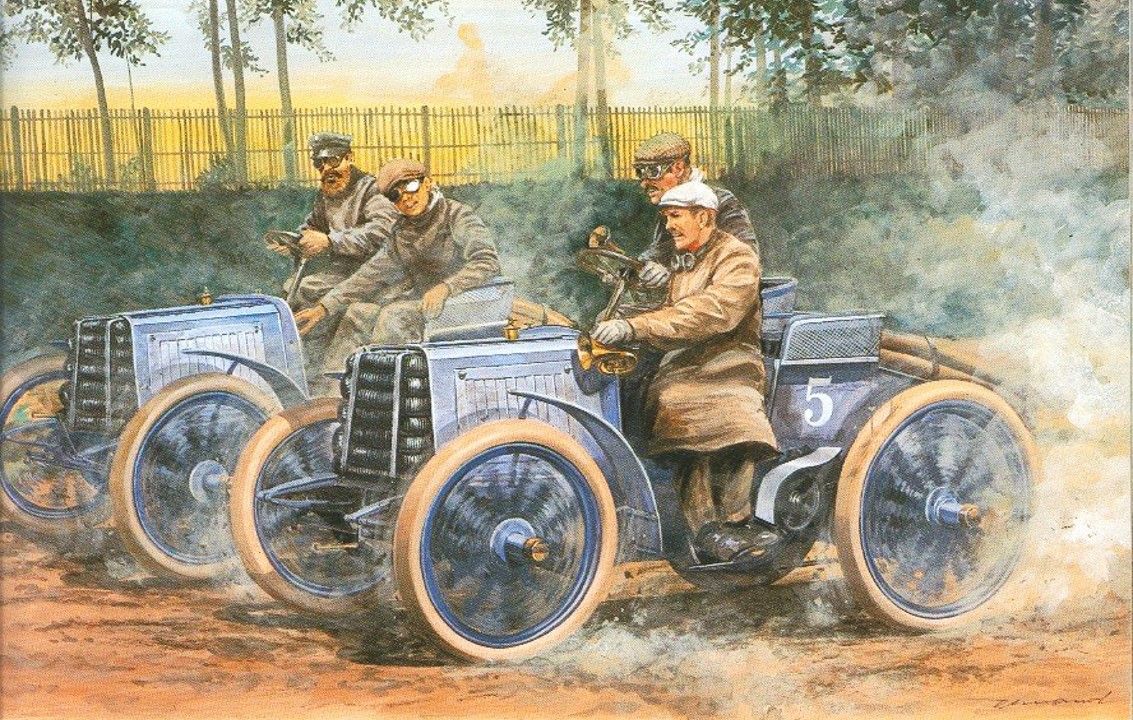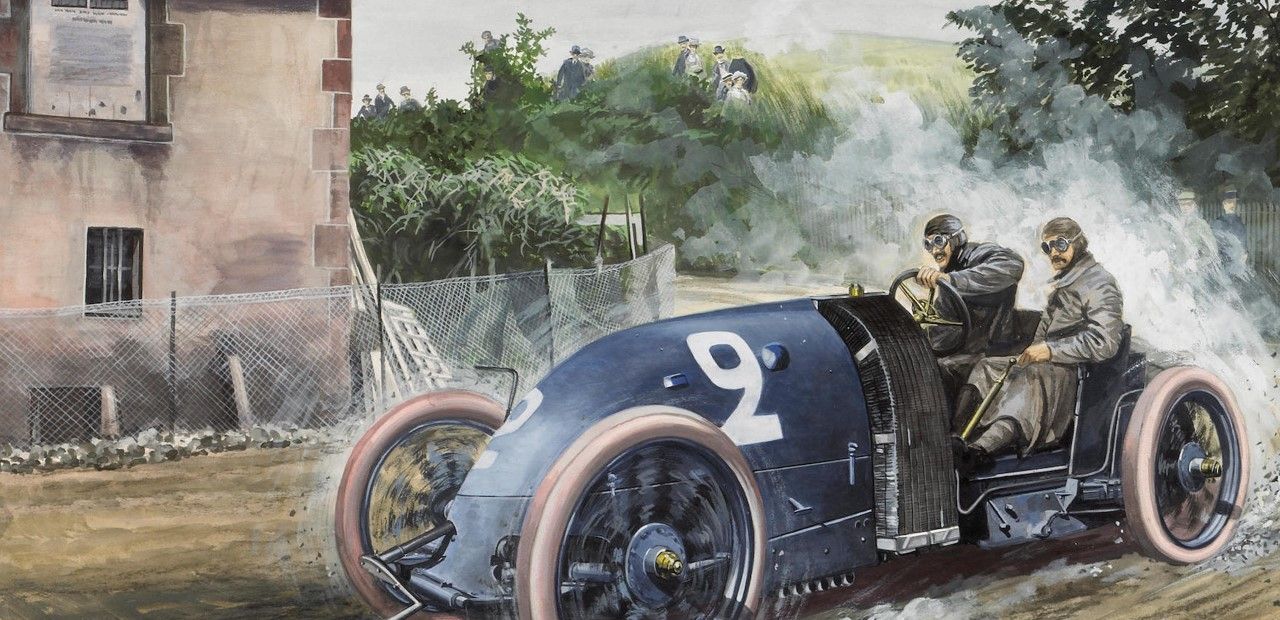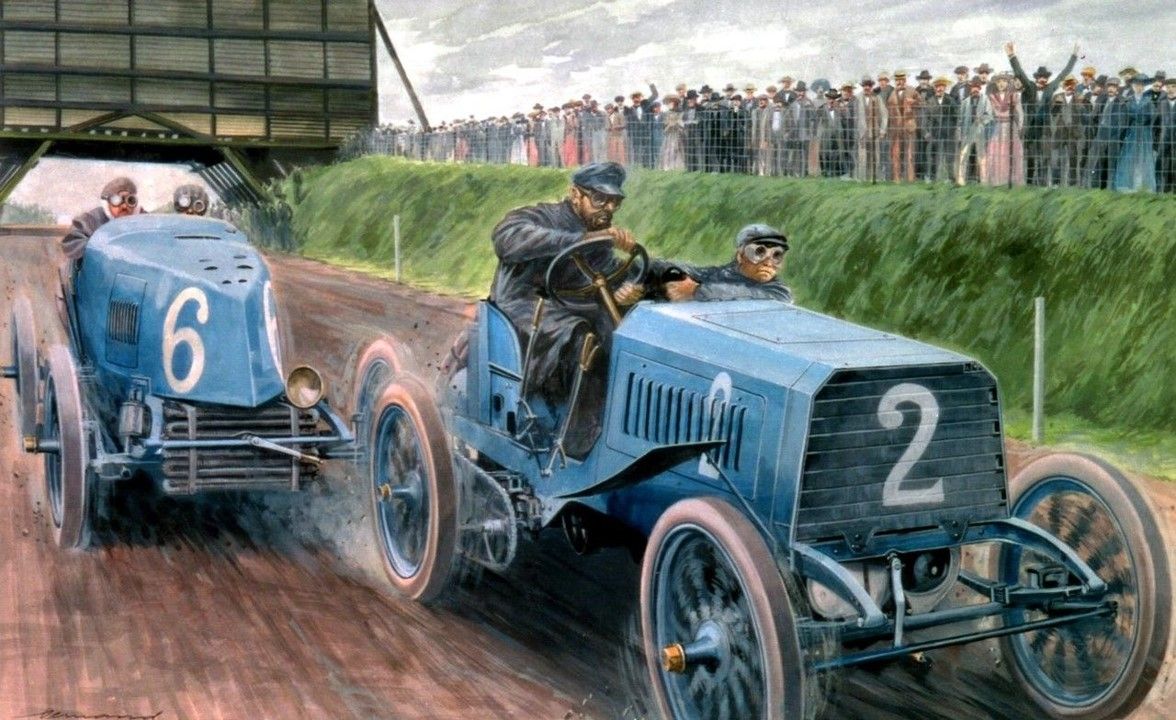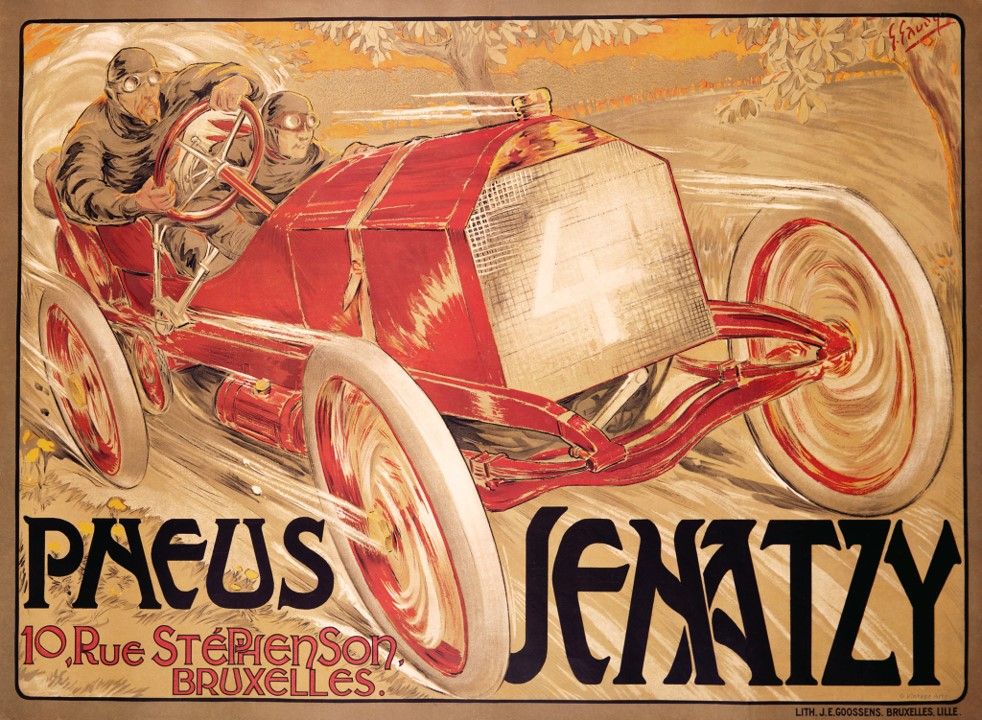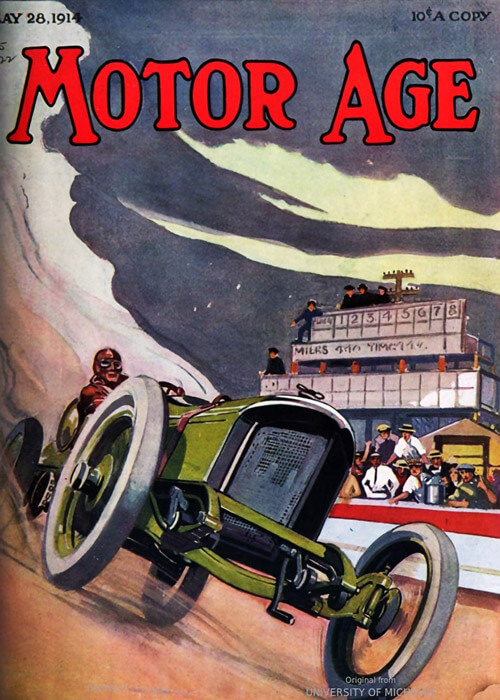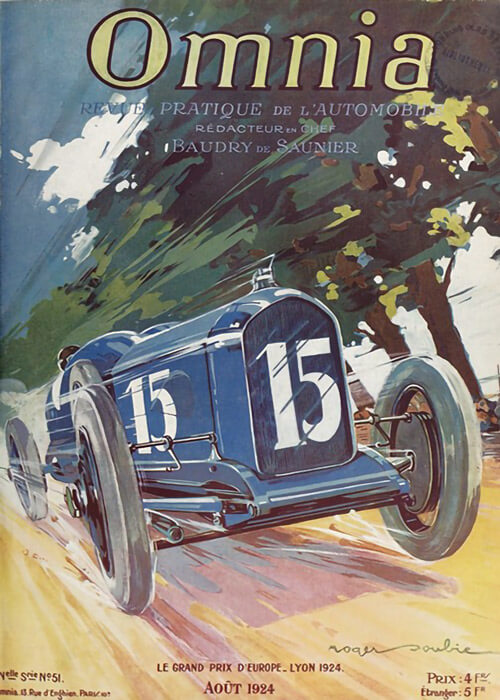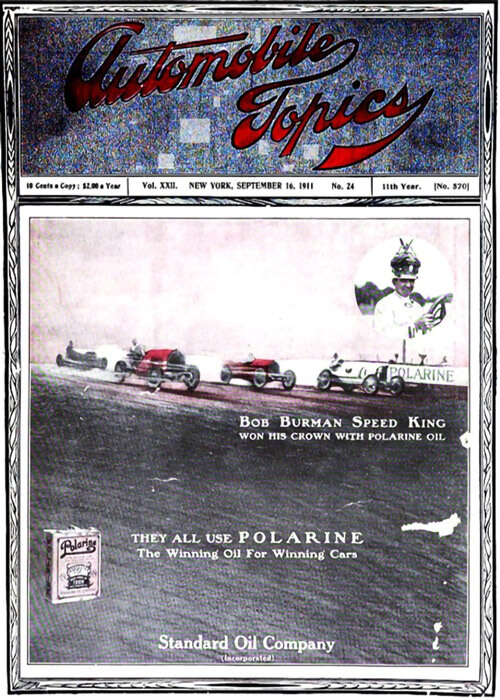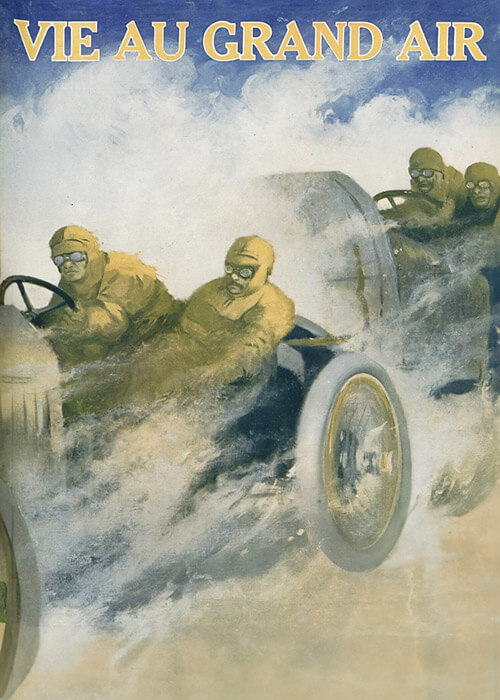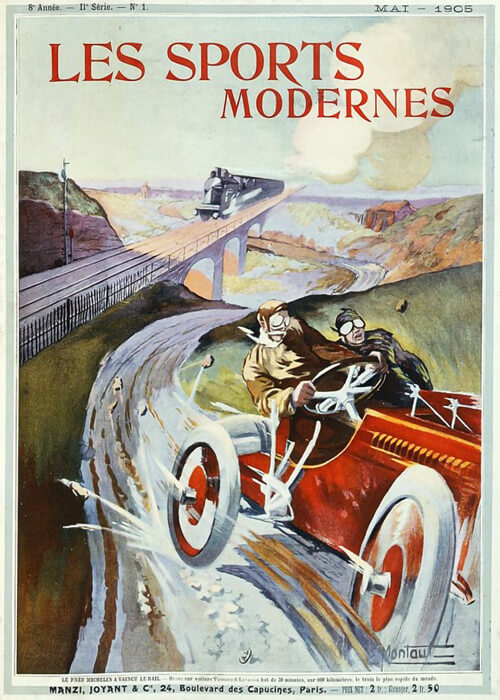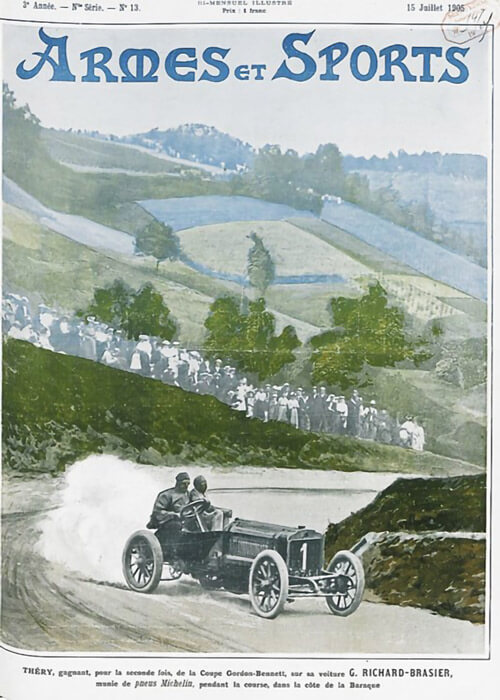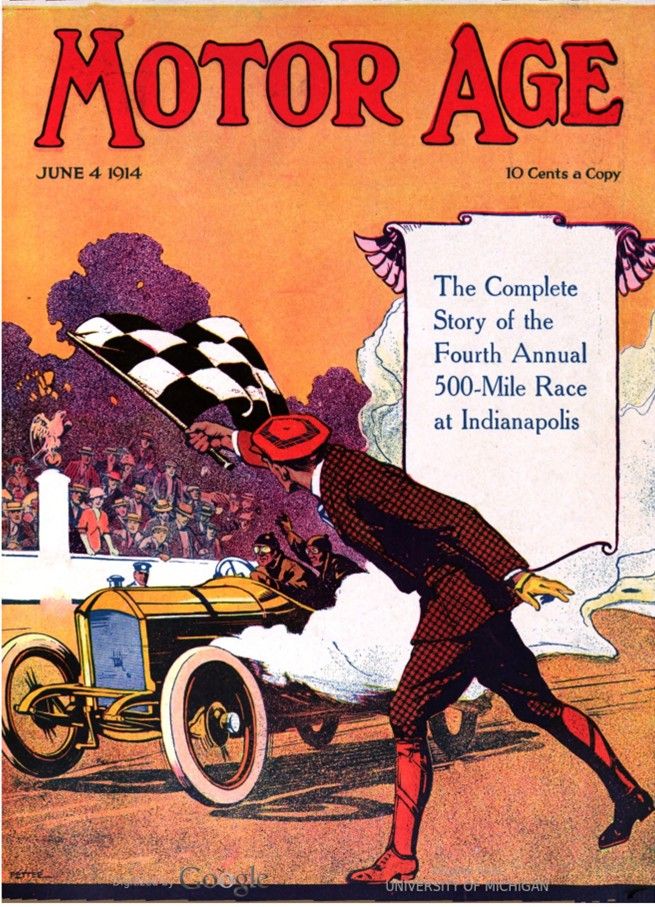

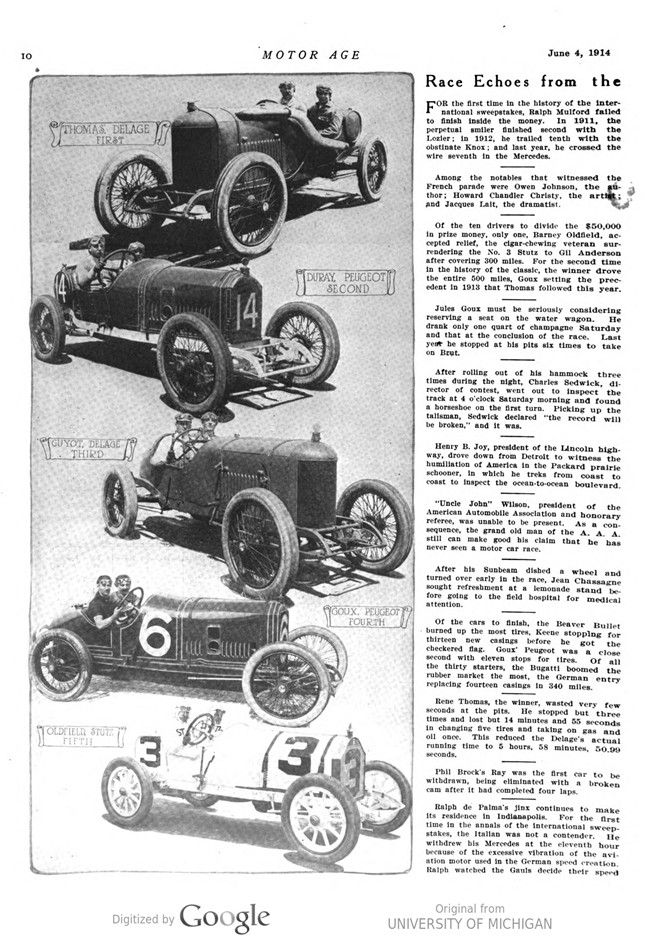
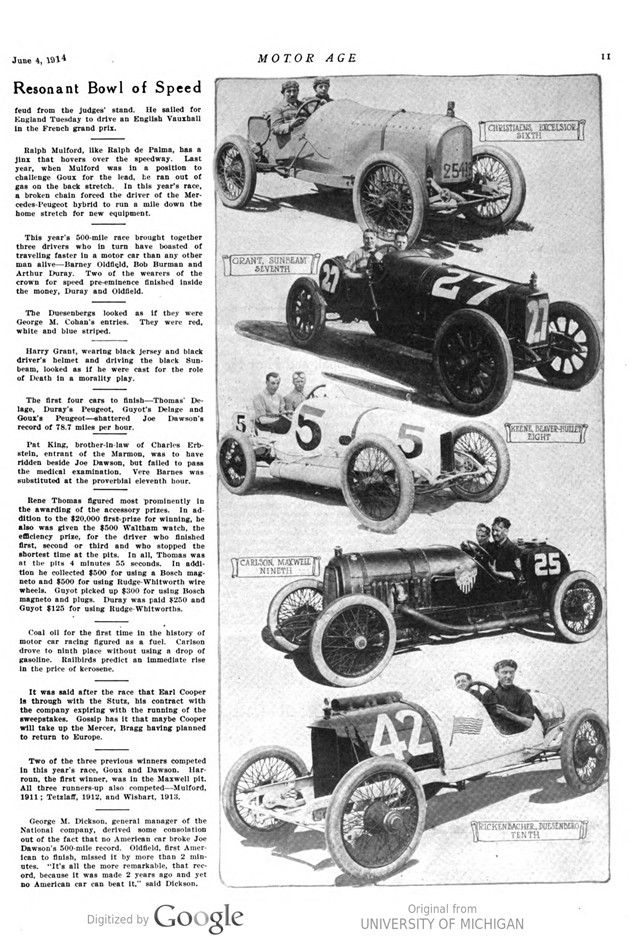
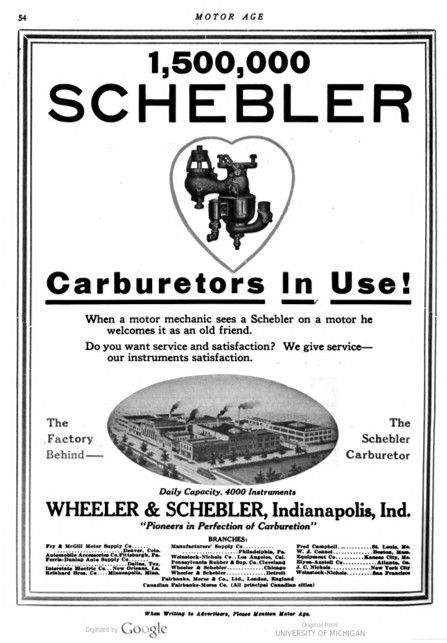
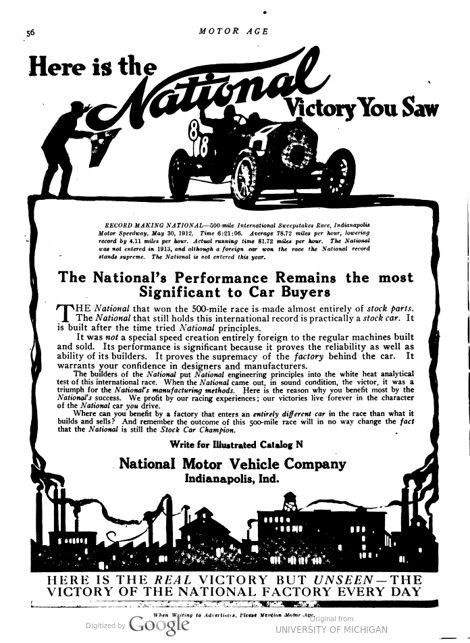
Text and jpegs by courtesy of hathitrust.org www.hathitrust.org, compiled by motorracinghistory.com
Motor Age, Vol. XXV, June 4, 1914
Race Echoes from the Resonant Bowl of Speed
FOR the first time in the history of the international sweepstakes, Ralph Mulford failed to finish inside the money. In 1911, the perpetual smiler finished second with the Lozier; in 1912, he trailed tenth with the obstinate Knox; and last year, he crossed the wire seventh in the Mercedes.
—-
Among the notables that witnessed the French parade were Owen Johnson, the author, Howard Chandler Christy, the artist and Jacques Lait, the dramatist.
—-
Of the ten drivers to divide the $50,000 in prize money, only one, Barney Oldfield, accepted relief, the cigar-chewing veteran surrendering the No. 3 Stutz to Gil Anderson after covering 300 miles. For the second time in the history of the classic, the winner drove the entire 500 miles, Goux setting the precedent in 1913 that Thomas followed this year.
—-
Jules Goux must be seriously considering reserving a seat on the water wagon, He drank only one quart of champagne Saturday and that at the conclusion of the race. Last year he stopped at his pits six times to take on Brut.
—-
After rolling out of his hammock three times during the night, Charles Sedwick, director of contest, went out to inspect the track at 4 o’clock Saturday morning and found a horseshoe on the first turn. Picking up the talisman, Sedwick declared „the record will be broken,“ and it was.
—-
Henry B. Joy, president of the Lincoln highway, drove down from Detroit to witness the humiliation of America in the Packard prairie schooner, in which he treks from coast to coast to inspect the ocean-to-ocean boulevard.
—-
“Uncle John“ Wilson, president of the American Automobile Association and honorary referee, was unable to be present. As a consequence, the grand old man of the A. A. A. still can make good his claim that he has never seen a motor car race.
—-
After bis Sunbeam dished a wheel and turned over early in the race, Jean Chassagne sought refreshment at a lemonade stand be fore going to the field hospital for medical attention.
—-
Of the cars to finish, the Beaver Bullet burned up the most tires, Keene stopping for thirteen new casings before he got the checkered flag. Goux‘ Peugeot was a close second with eleven stops for tires. Of all the thirty starters, the Bugatti boomed the rubber market the most, the German entry replacing fourteen casings in 340 miles.
—-
Rene Thomas, the winner, wasted very few seconds at the pits. He stopped but three times and lost but 14 minutes and 55 seconds in changing five tires and taking on gas and oil once. This reduced the Delage’s actual running time to 5 hours, 58 minutes, 50.99 seconds.
—-
Phil Brock’s Ray was the first car to be withdrawn, being eliminated with a broken cam after it had completed four laps.
—-
Ralph de Palma’s jinx continues to make its residence in Indianapolis. time in the annals of the international sweepstakes, the Italian was not a contender. withdrew bis Mercedes at the eleventh hour because of the excessive vibration of the aviation motor used in the German speed creation. Ralph watched the Gauls decide their speed feud from the judges‘ stand. He sailed for England Tuesday to drive English Vauxhall in the French grand prix.
—-
Ralph Mulford, like Ralph de Palma, has a jinx that hovers over the speedway. Last year, when Mulford in a position to challenge Goux for the lead, he ran out of gas on the back stretch. In this year’s race, a broken chain forced the driver of the Mercedes-Peugeot hybrid to run a mile down the home stretch for new equipment.
—-
This year’s 500-mile race brought together three drivers who in turn have boasted of traveling faster in a motor car than any other man alive-Barney Oldfield, Bob Burman and Arthur Duray. Two of the wearers of the crown for speed pre-eminence finished inside the money, Duray and Oldfield.
—-
The Duesenbergs looked as if they were George M. Cohan’s entries. white and blue striped. They were red, white and blue.
—-
Harry Grant, wearing black jersey and black driver’s helmet and driving the black Sunbeam, looked as if he were cast for the role of Death in a morality play.
—-
The first four cars to finish – Thomas‘ Delage, Duray’s Peugeot, Guyot’s Delage and Goux’s Peugeot – shattered Joe Dawson’s record of 78.7 miles per hour.
—-
Pat King, brother-in-law of Charles Erbstein, entrant of the Marmon, was to have ridden beside Joe Dawson, but failed to pass the medical examination. Vere Barnes was substituted at the proverbial eleventh hour.
—-
Rene Thomas figured most prominently in the awarding of the accessory prizes. In addition to the $20,000 first prize for winning, he also was given the $500 Waltham watch, the efficiency prize, for the driver who finished first, second or third and who stopped the shortest time at the pits. In all, Thomas was at the pits for 4 minutes 55 seconds. In addition, he collected $500 for using a Bosch magneto and $500 for using Rudge-Whitworth wire wheels. Guyot picked up $300 for using Bosch magneto and plugs. Duray was paid $250 and Guyot $125 for using Rudge Whitworths.
—-
Coal oil for the first time in the history of motor car racing figured as a fuel. Carlson drove to ninth place without using a drop of gasoline. Railbirds predict an immediate rise in the price of kerosene.
—-
It was said after the race that Earl Cooper is through with the Stutz, bis contract with the company expiring with the running of the sweepstakes. Gossip has it that maybe Cooper will take up the Mercer, Bragg having planned to return to Europe.
—-
Two of the three previous winners competed in this year’s race, Goux and Dawson. Harroun, the first winner, was in the Maxwell pit. All three runners-up also competed-Mulford, 1911; Tetzlaff, 1912, and Wishart, 1913.
—-
George M. Dickson, general manager of the National company, derived some consolation out of the fact that no American car broke Joe Dawson’s 500-mile record. Oldfield, first American to finish, missed it by more than 2 minutes. „It’s all the more remarkable, that record, because it was made 2 years ago and yet no American car can beat it,“ said Dickson.
